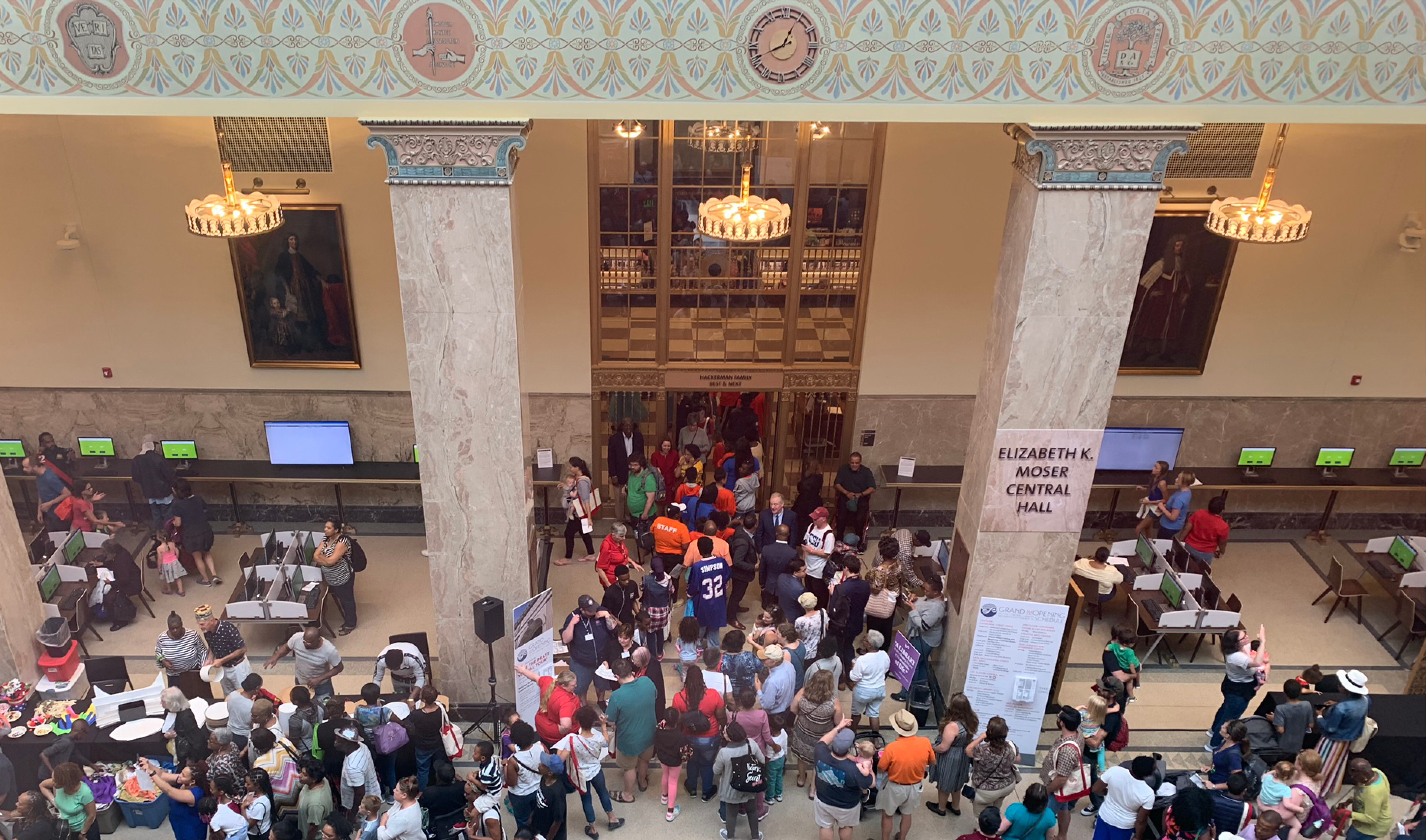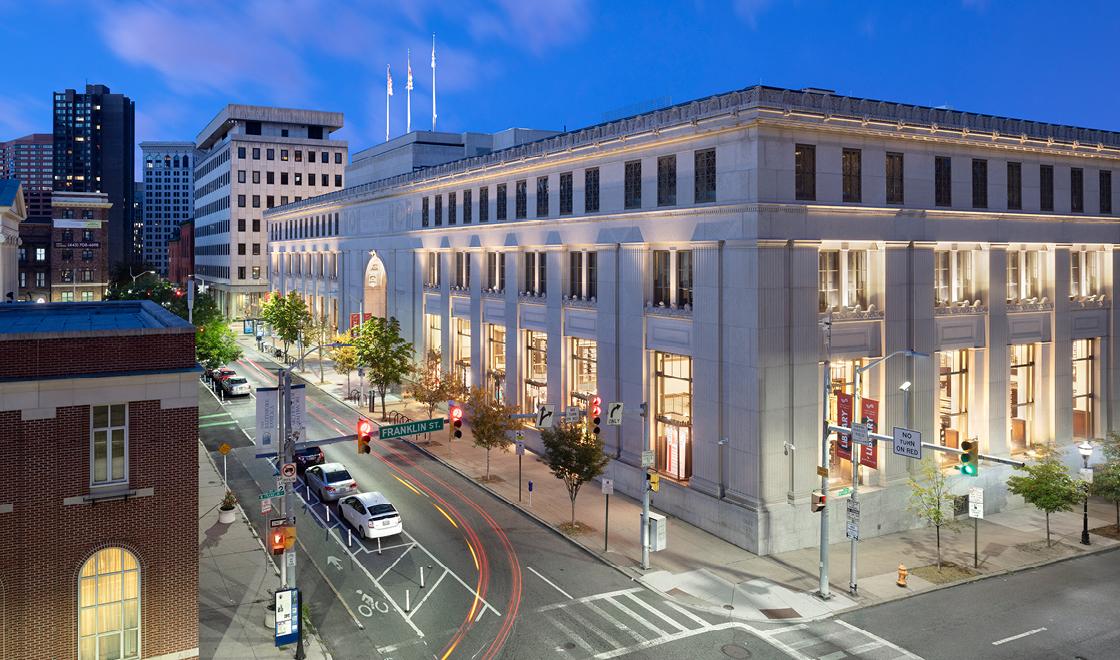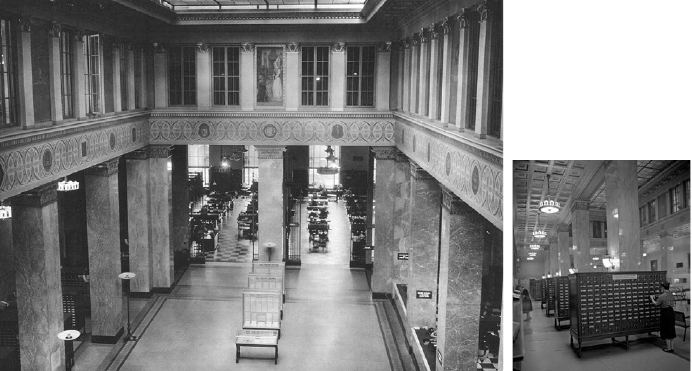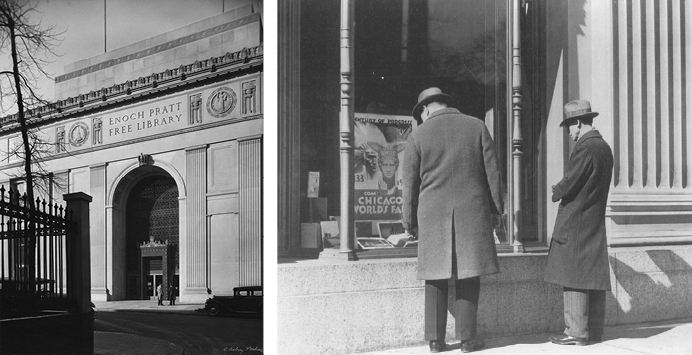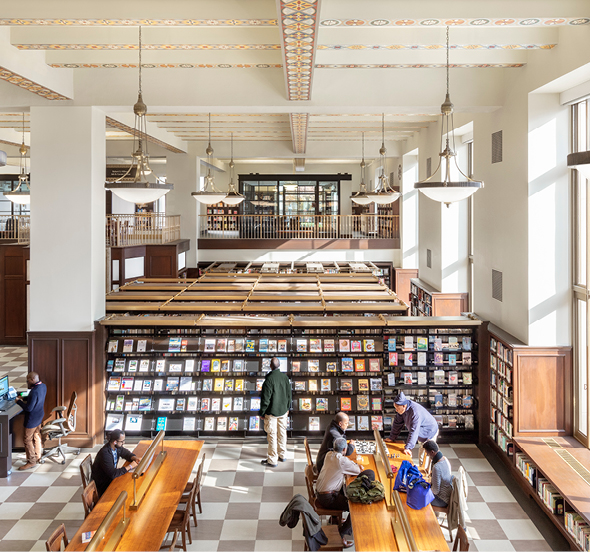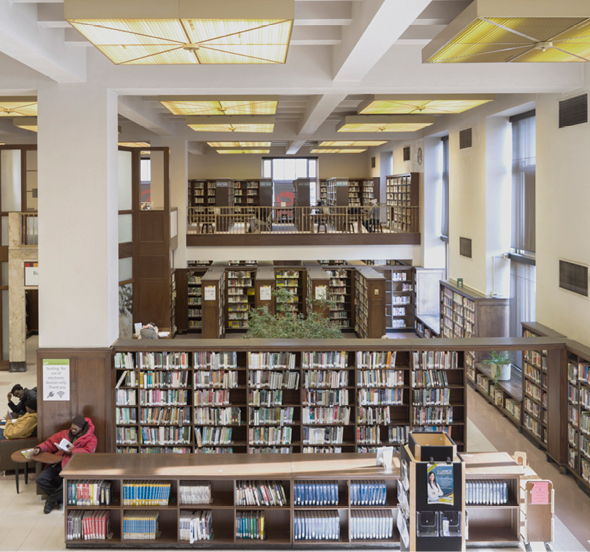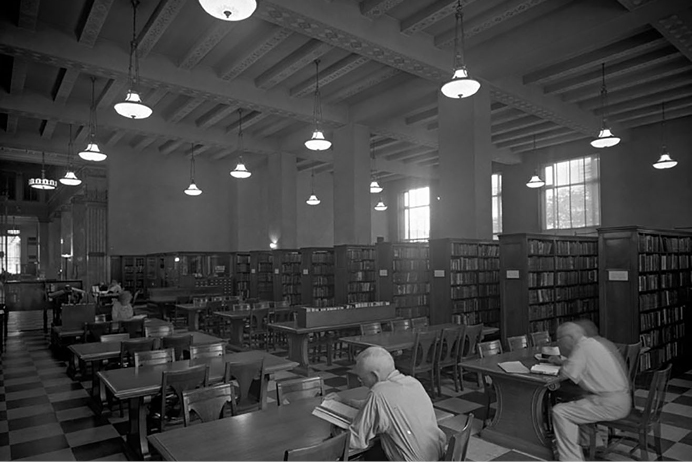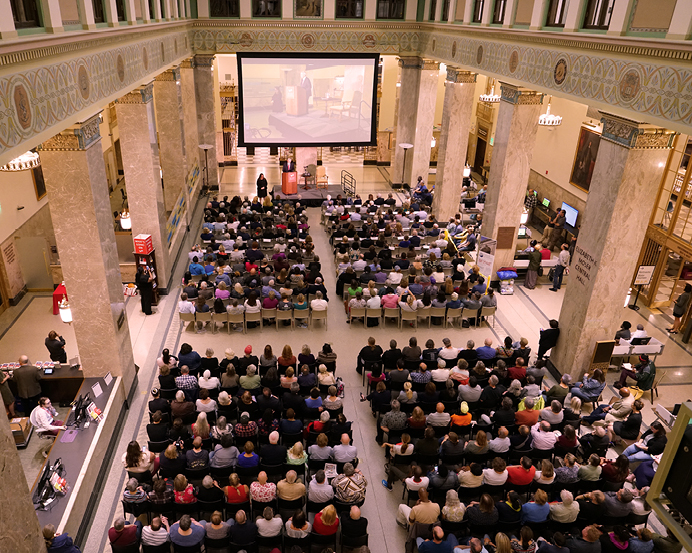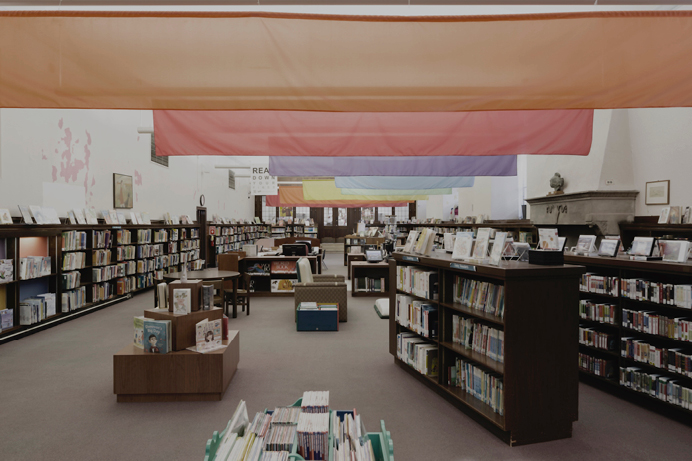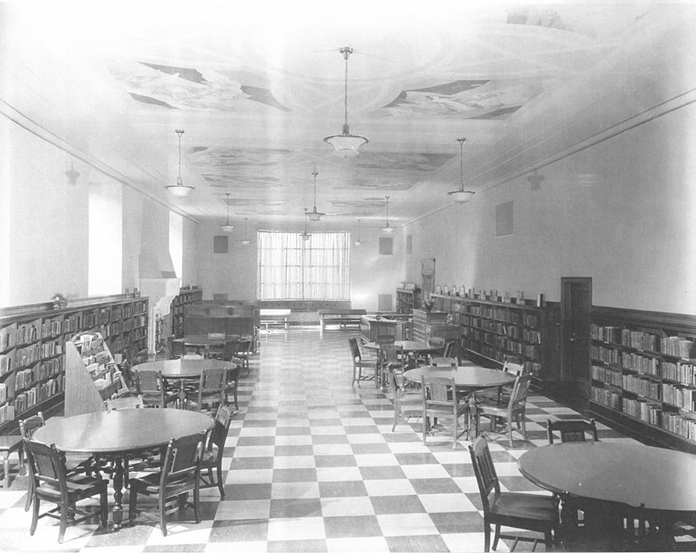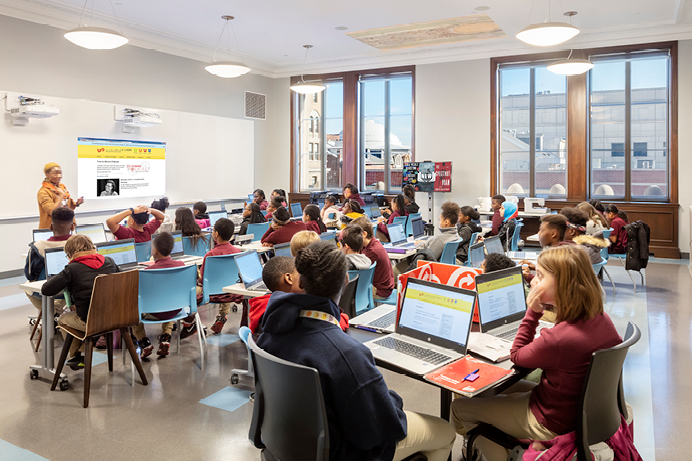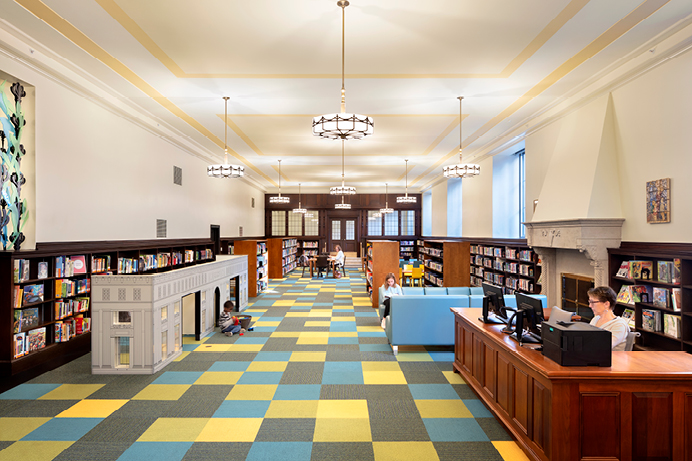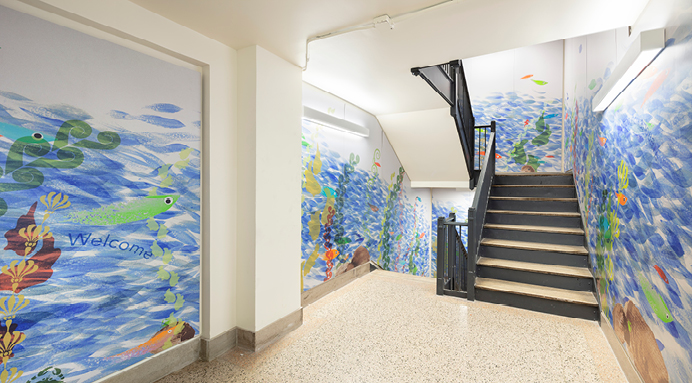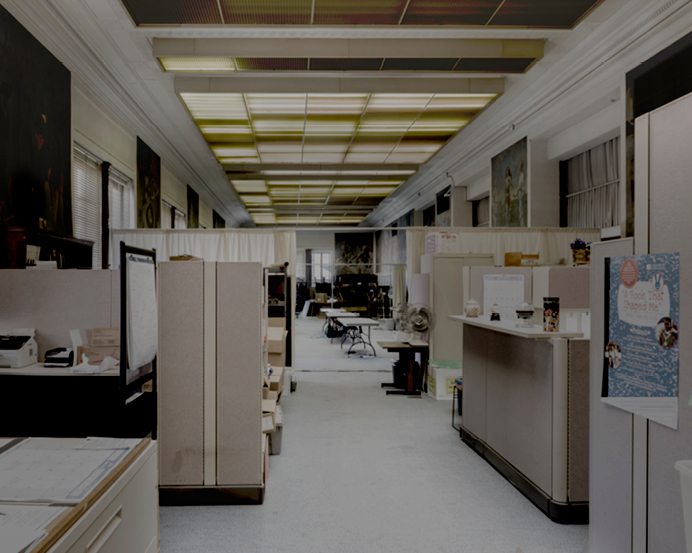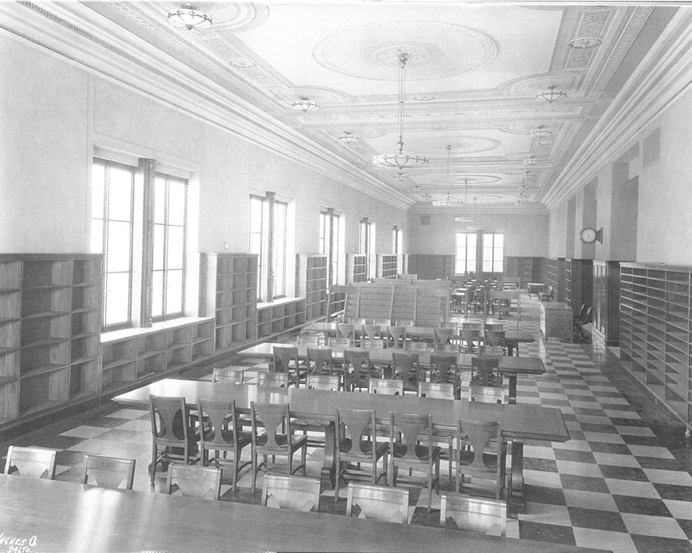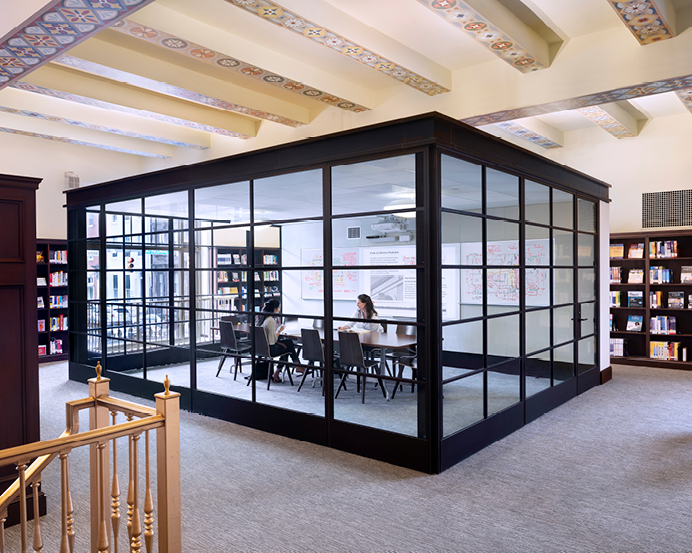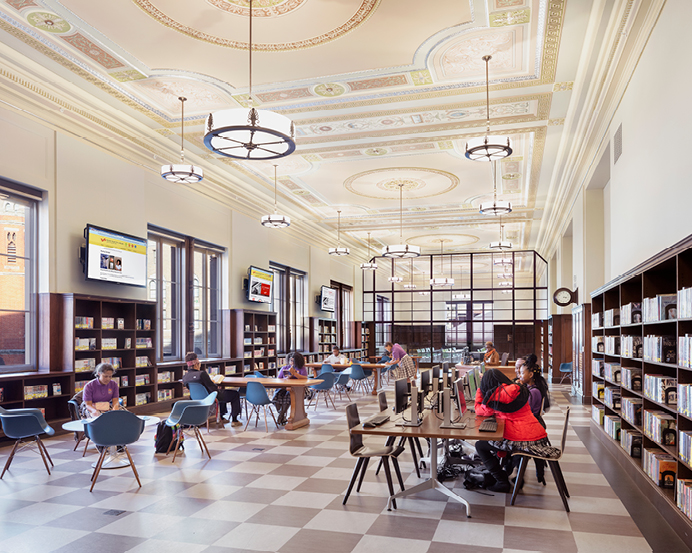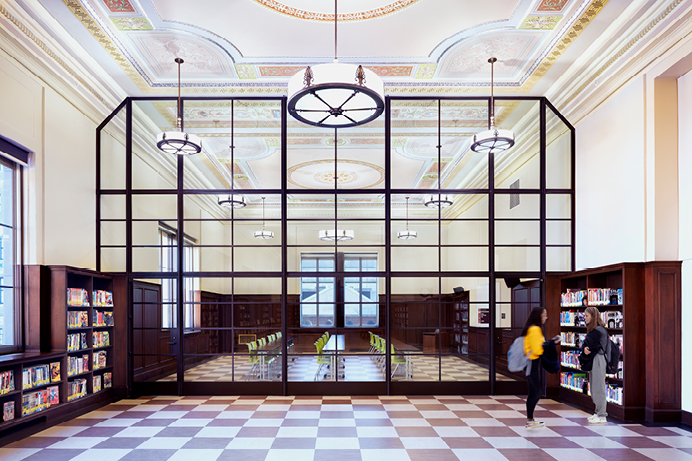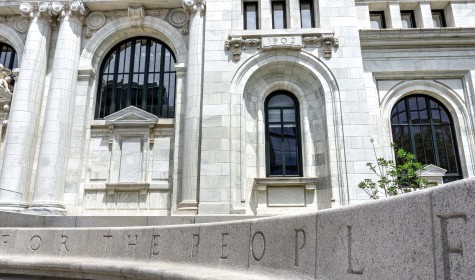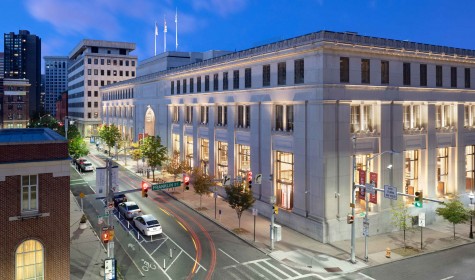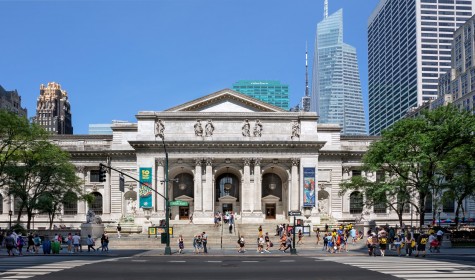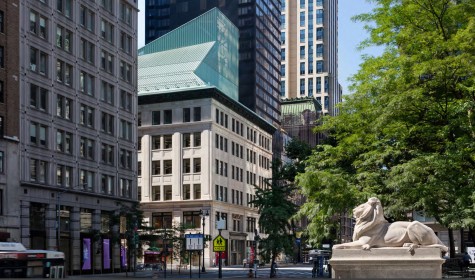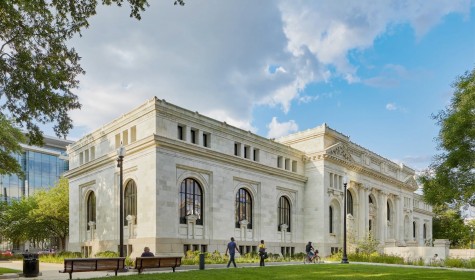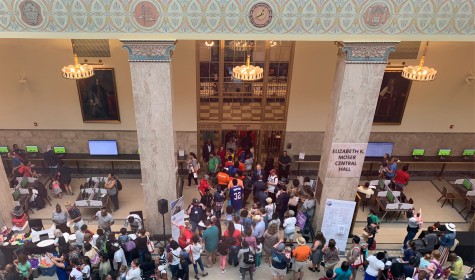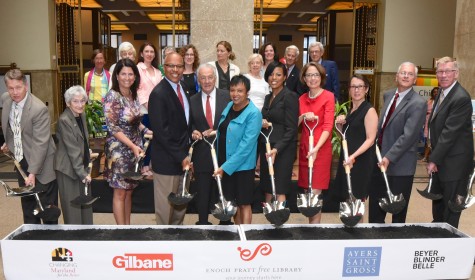Enoch Pratt Free Library
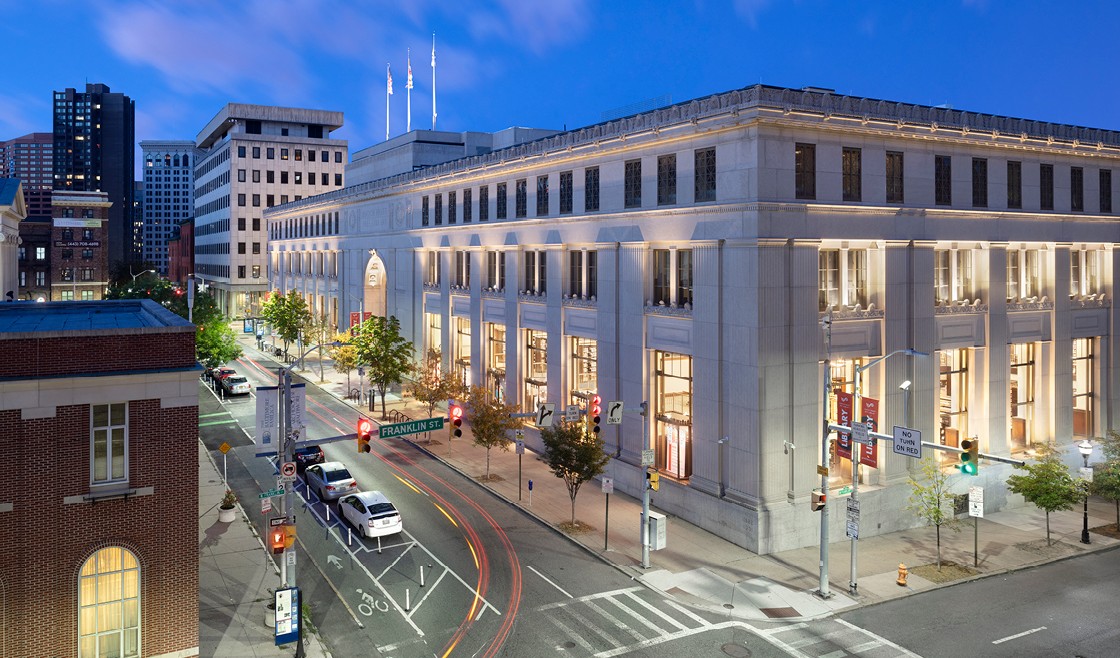
The core mission of Baltimore’s 138-year-old Enoch Pratt Free Library has remained consistent throughout major societal changes: to provide equal access to information, services, and opportunities that empower, enrich, and enhance the quality of life for all. Beyer Blinder Belle’s experience designing the renovation of Enoch Pratt Free Library’s flagship Central Branch over a 20-year span tells the story about how the library as place has evolved to achieve its mission.
A Library for All
Built in 1933, the Enoch Pratt Free Library’s (EPFL) Central Branch rivaled many contemporary libraries in civic grandeur and elegance. In one significant symbolic and formal regard, however, it stood apart. Most of the libraries of the era incorporated elements of the religious architecture of ancient Greece, including a grand staircase climbing to the entrance. Although the ascent into these “temples of knowledge” gave the visitor the sense of being elevated into a sanctified space, it also functioned as a physical and psychological barrier to passersby on the street.
The Library’s director at the time, Joseph L. Wheeler, advocated for a building that conveyed a different message. Taking its cues from the department stores that were at the same time transforming the urban retail experience, EPFL’s entrance and monumental windows are at the street level, decorated with eye-catching displays designed to entice people inside. The intent was to communicate the vision of Baltimore businessman and library founder Enoch Pratt that this was a place welcome to all, “rich or poor and without distinction of race or color.”
Scroll through each of the below lightboxes for sequences of post-, pre-renovation, and historic images
First Design
In 1998, Maryland’s Department of General Services hired Baltimore architects Ayers Saint Gross (ASG) with Beyer Blinder Belle (BBB) on behalf of EPFL for a major capital improvement project at the Central Branch. The much-loved building was worn and in need of attention, and the programs and collections had grown to the point of needing additional space. The project scope included an annex to the existing building, designed by ASG and completed in 2003.
BBB’s design for the first complete renovation and restoration of the 1933 structure included a comprehensive preservation scope, infrastructure upgrades, and changes to the layout reflecting the needs of the community and staff. The architecture-engineering team finished the construction documents for the renovation to the 95% milestone in 2001, at which point State funding was determined to be insufficient to complete this portion of the project. The drawings were subsequently archived for more than a decade.
In 2014, the Maryland Board of Public Works passed legislature allocating funds for the project. EPFL was ready to return to the dream of a full renovation of the historic building, but did the 2001 design fulfill the institution’s current needs and conditions?
A Changed World
From a technical point of view, the building and its systems had aged thirteen years. The systems incorporated into the 2001 design did not achieve the sustainability benchmarks that had become a resolute priority. Moreover, the world had dramatically changed, and with it the needs of the Library’s users. Some of the differences were the result of cultural and socioeconomic shifts that had been underway for decades. Others reflected the radical innovation that changed the ways that information and services are shared and discovered: the world wide web.
Consider that in 1998, when planning began for the first design, about 24% of the developed world used the Internet1. By 2014, usage had increased to 76%, and in all realms progress included greater compatibility, fluency, and time spent communicating in the digital world. For the first time in centuries, the primacy of the book as the medium for learning was challenged, and critics questioned the relevance of libraries in this new age.
The end users, led by then-Chief Executive Officer Dr. Carla Hayden, were adamant that the mission of the Library was more crucial than ever and that by rethinking the way the building was used, the Central Branch could be elevated to a state-of-the-art 21st century facility while maintaining its role as a cultural and architectural touchstone in Baltimore. With this directive, BBB, in coordination with ASG and EPFL’s consulting architect Sandra Vicchio & Associates, began developing a renovation that had evolved significantly from the one in the 2001 drawings.
Updated Vision
Some aspects of the new design depart dramatically from any notion of a traditional library. One can still find long rows of bookshelves, shaded reading lamps, and hushed whispers, but today they share the building with an altogether more active, collaborative, and technologically charged program. Preparation for professional life and pursuit of lifelong learning now almost always include the use of computers at some point along the way, and to that end the Library has been saturated with electrical power and data connectivity. Further, the 20th-century desire for quiet places to study and read has given way in part to a need for spaces to gather in groups for the exchange of ideas.
Central Hall as Town Square
Cross the threshold from the street and the first space a visitor encounters is the 3-story, light-filled Central Hall. Once an echoing home to rows of card catalogs, it has been reconceived as a new “Town Square.” Audio-visual equipment and acoustic treatments sensitively integrated into the historic fabric transform the hall into a flexible space available for public events as diverse as artists’ lectures, yoga classes, and community benefits. The card catalogs have been replaced by dozens of public computers that are constantly in use. Amidst so much change, the finishes and light fixtures were respectfully restored to their original condition, balancing the modernized space with a renewed ability to inspire pride of place and connection to history.
Job and Career Center
By moving some programs into the new Annex and condensing the footprint of the printed matter collections, more space became available for other services to expand throughout the Library. To the south of Central Hall is a reading room that was previously dedicated almost entirely to business, science, and technology. If the renovation had been built as designed in 2001, a new Job Center would have occupied a mere 120 square foot office in a corner of the reading room.
In the new design, it was expanded to occupy almost 6500 square feet. Its services range from regularly scheduled classes on resume building, writing cover letters, and networking to more specialized advising for veterans, entrepreneurs, or justice-involved individuals.
Eight classrooms of varying sizes, fitted with projection screens and white boards, were inserted within the flanking mezzanines of the grand reading room. Their acoustically rated steel and glass storefront walls allow librarians and specialists to provide these services without disruption to other library users while maintaining natural light and a visual connection to the historic space.
Children’s Department
The original Children’s Room remains in its historic location one story below the ground level. For many years, access has been via an inconspicuous door in Central Hall leading to a winding stair and narrow hallway sequence. BBB’s design integrated environmental graphics, artwork, and lighting to make the path more welcoming and easier to identify. Picking up on the motifs found in the historic fishpond in the Children’s Room and decorative metalwork throughout the building, a playful, aquatic-themed wayfinding scheme now marks the route with colorful fish swimming amongst the word “Welcome” written in many languages. With funds from the Harry and Jeanette Weinberg Foundation and assistance from the public art organization Art With a Heart, members of the Library community were brought in to create a mosaic mural at the room’s entry vestibule, complete with a three-dimensional mermaid’s tail.
The new design expands the department by over 1000 square feet into adjacent areas to house a more active and inclusive program than the one in the 2001 plans. That narrow corridor now has a glass wall looking into a new multipurpose room that hosts activities ranging from butterfly science to American Sign Language. It is acoustically separated with easy-to-maintain finishes for hands-on and lively gatherings. The room can be divided so that programs for parents occur in parallel with children’s events. Across the corridor there is a new dedicated family bathroom and quiet room for tutoring.
The historic reading room itself has been updated with bright, warm, durable finishes and light fixtures inspired by the originals. The fishpond has been restored, reminding adult parents and caretakers of their childhood visits to the Children’s Room and delighting a new generation of young book lovers. In the back, an original wood and glass storefront delimits a space which was designated in 2001 as a toddler’s Story Room. Storytelling now takes place in the nearby Meyerhoff Children’s Garden and, in the new design, the room has become a dedicated Computer Lab for early childhood, exemplifying the value placed on both digital and traditional literacy starting at an early age. The fond memories that adults cherish of their time in the Children’s Department will surely coexist with the new memories created there every day.
Teen Center
One of the most significant developments in library science over the last 20 years is the importance placed on providing dedicated reading and resource spaces for teenagers. This innovation recognizes that adolescents have different interests and needs than both children and adults: a safe space to study independently, receive help with homework assignments, and explore skills that could inspire them to stay in school and pursue higher education. They also need a place to socialize and have fun after school with kids in their own age group. In the past, this age group has never had more than a Young Adult section in the open stacks; in the new design, a dedicated new wing of almost 8,000 square feet on the second floor is devoted to a new Teen Center.
The Center includes a fully restored reading room for quiet study with a glass and steel partition delineating a flexible classroom. Adjacent to it, a former State Library Resource Center room has been designated as the Teen Creation Center. Brightly lit with contemporary finishes and comfortable furniture, the Creation Center includes a flexible room set up for video games, sewing machines, and 3D printers, with an adjacent state-of-the-art recording studio. The Center celebrates young people’s love of technology and enables them to create their own content and have training opportunities that easily translate to future employment.
Ready for the Future
The new design opened in the fall of 2019 with a triumphant ribbon cutting attended by thousands of Baltimore residents. The street was closed for a block party that continued for a weekend of celebration, and Central Hall shone in its new role as Town Square. Again and again people commented that this was the library that they remembered from their childhood, only even more accessible and beautiful than ever.
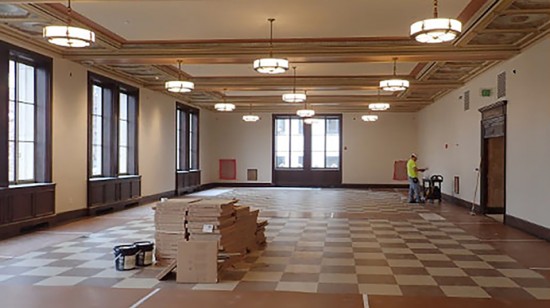
Creative Center Multipurpose Room, 2019 - The Creative Center is a venue for non-traditional performance. The room can be configured in many ways to accommodate, among other things, dance, slam poetry, contemporary theater, or music recitals.
The new CEO, Heidi Daniels, has pledged to make sure that the building continues to play an important role in Baltimore. The renovation will support this vision: it resonates with the needs of contemporary life, which have changed so dramatically over the course of 20 years. Anticipating future change, EPFL has the flexibility to adapt to leaps that the next decades may bring. The groundswell of excitement in the community is a testimony that the Library is more than just a time capsule from another era. By evolving with its users, the Library will continue to fulfill its mission to empower, enrich, and enhance their quality of life.
